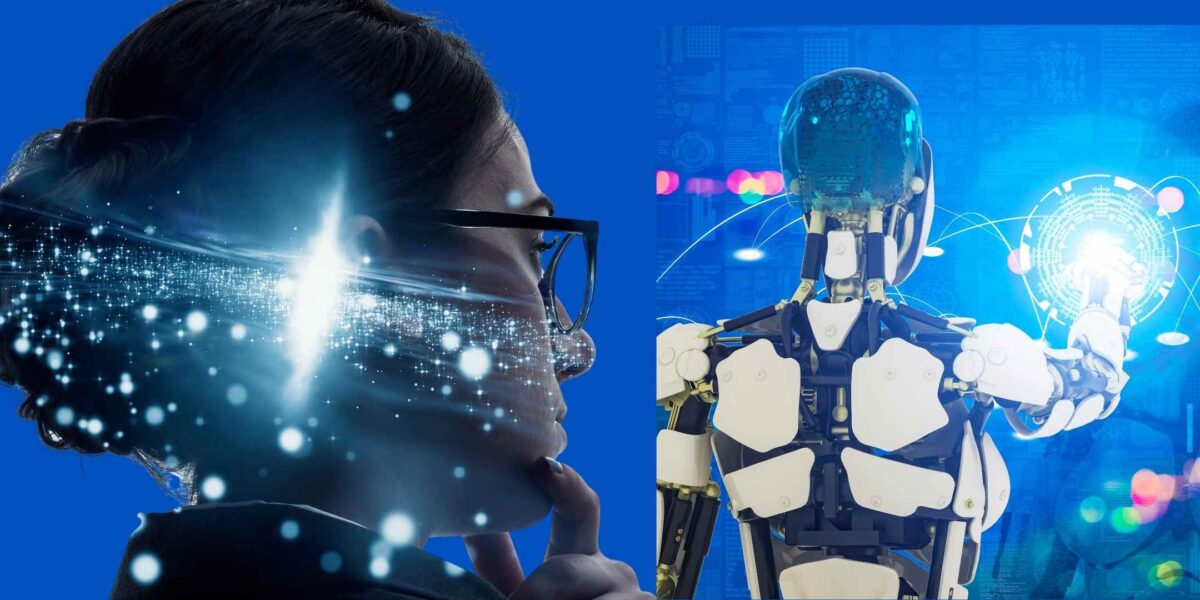What is a Chief Search Engine Optimization (CSEO) Officer?
A Chief Search Engine Optimization Officer (CSEO) is a senior executive responsible for overseeing a company’s entire SEO strategy and execution. This role involves aligning SEO initiatives with broader business objectives, ensuring that the company’s online presence is optimized for search engines, and driving organic traffic to the organization’s digital platforms.
The CSEO typically reports directly to the CEO or another high-level executive, such as the Chief Marketing Officer (CMO), and works closely with various departments, including marketing, IT, content creation, and product development. The role requires deep expertise in search algorithms, keyword strategy, content optimization, link-building techniques, technical SEO, and data analysis.
Why Are Companies Elevating SEO to the C-Suite?
In recent years, companies have increasingly recognized the critical role of SEO in driving digital growth, customer acquisition, and brand visibility. This recognition has led to the creation of the CSEO role in the C-suite for several reasons:
1. SEO as a Core Business Driver
As digital transformation accelerates, SEO has become a core component of any comprehensive digital marketing strategy. Organic search often accounts for a significant portion of a company’s website traffic, which directly impacts sales, lead generation, and brand awareness. By elevating SEO to the C-suite, companies acknowledge its strategic importance in driving business outcomes.
2. Complexity of the SEO Landscape
The SEO landscape is increasingly complex and dynamic, with frequent updates to search engine algorithms, evolving user behaviors, and the integration of new technologies like artificial intelligence and voice search. A CSEO brings the necessary expertise and authority to navigate these complexities, ensuring that the company remains competitive in search rankings.
3. Cross-Departmental Collaboration
SEO impacts various aspects of a business, from content creation and web development to user experience and conversion optimization. The CSEO role facilitates cross-departmental collaboration, ensuring that SEO best practices are integrated across all digital touchpoints. This alignment helps in creating a seamless and optimized customer journey.
4. Data-Driven Decision Making
SEO is inherently data-driven, requiring continuous analysis of search trends, user behavior, and website performance. A CSEO leverages advanced analytics and machine learning tools to make informed decisions, identify opportunities, and mitigate risks. By placing SEO in the C-suite, companies emphasize the importance of data-driven strategies in achieving business goals.
5. Future-Proofing the Business
As search engines evolve and new digital platforms emerge, companies must adapt their SEO strategies to maintain visibility and relevance. A CSEO is responsible for anticipating future trends and ensuring that the company’s digital presence is future-proofed. This proactive approach helps companies stay ahead of the competition and capitalize on emerging opportunities.
Types of Duties of a Chief Search Engine Optimization (SEO) Officer
The role of a Chief Search Engine Optimization Officer (CSEO) encompasses a broad range of responsibilities that extend across multiple departments within an organization. These duties include strategic planning, technical oversight, cross-functional collaboration, and performance analysis, all with the goal of optimizing the company’s online presence and driving organic growth. Below are some of the key duties of a CSEO and how they impact various divisions within the company:
1. Strategic SEO Planning
- Duties:
- Develop and implement the overall SEO strategy aligned with the company’s business goals.
- Identify key performance indicators (KPIs) for measuring SEO success.
- Forecast and allocate budget for SEO initiatives.
- Impact on Other Divisions:
- Marketing: Aligns with broader marketing strategies to ensure consistent messaging and campaign integration.
- Finance: Collaborates to justify and optimize SEO budget allocations.
- Product Development: Guides product teams to ensure that new products and features are SEO-friendly from inception.
2. Keyword and Content Strategy
- Duties:
- Lead keyword research to identify high-value search terms relevant to the business.
- Collaborate with content teams to create optimized content that meets both user intent and search engine criteria.
- Oversee content updates and audits to ensure ongoing relevance and ranking potential.
- Impact on Other Divisions:
- Content Creation: Provides direction and keyword insights to writers and editors, ensuring content is SEO-optimized.
- Public Relations (PR): Ensures press releases and other PR materials are optimized for search visibility.
- Sales: Aligns content strategies with sales goals, creating materials that support lead generation and conversion.
3. Technical SEO Oversight
- Duties:
- Ensure that the website’s technical framework is optimized for search engines, including site speed, mobile responsiveness, and secure connections (HTTPS).
- Collaborate with IT and development teams to implement technical SEO best practices, such as structured data, XML sitemaps, and canonical tags.
- Monitor and resolve any technical issues that may affect search engine indexing or user experience.
- Impact on Other Divisions:
- IT/Development: Works closely with IT to implement and maintain a technically sound website architecture that supports SEO.
- User Experience (UX): Ensures that the website design and functionality are user-friendly and meet SEO standards, improving overall user satisfaction.
- Operations: Assists in optimizing internal search functionalities and aligning them with external SEO strategies to enhance customer navigation.
4. Analytics and Performance Monitoring
- Duties:
- Utilize advanced analytics tools to track SEO performance, including traffic, rankings, and conversion rates.
- Analyze data to identify trends, opportunities, and areas for improvement.
- Report on SEO performance to the executive team and stakeholders, providing insights and recommendations for continuous improvement.
- Impact on Other Divisions:
- Data Analytics: Collaborates with data teams to ensure accurate and comprehensive tracking of SEO metrics.
- Executive Leadership: Provides actionable insights to the C-suite, informing strategic decisions and investments.
- Customer Support: Helps identify common search queries and pain points, leading to improvements in customer support and FAQs.
5. Link Building and Authority Management
- Duties:
- Develop and execute a link-building strategy to increase the website’s authority and credibility in the eyes of search engines.
- Foster relationships with industry influencers, bloggers, and partners to secure high-quality backlinks.
- Monitor and manage the company’s online reputation, ensuring that backlinks and mentions align with brand values.
- Impact on Other Divisions:
- Partnerships and Alliances: Works with the partnerships team to identify opportunities for collaborations that can enhance link-building efforts.
- Brand Management: Aligns SEO initiatives with brand reputation strategies, ensuring consistency and positive perception.
- Legal: Ensures that all link-building activities comply with industry regulations and legal guidelines.
6. Cross-Functional Leadership and Collaboration
- Duties:
- Lead and mentor the internal SEO team, providing guidance and professional development opportunities.
- Collaborate with other C-suite executives to ensure SEO is integrated into all aspects of the business.
- Facilitate communication and coordination between departments to ensure that SEO best practices are understood and implemented across the organization.
- Impact on Other Divisions:
- Human Resources (HR): Collaborates on training programs to ensure all employees understand the importance of SEO and how their roles contribute to it.
- Corporate Strategy: Ensures SEO initiatives are aligned with the company’s long-term vision and goals.
- Supply Chain and Logistics: Works with these teams to optimize product descriptions and information for search engines, particularly in e-commerce environments.
Conclusion
The duties of a Chief Search Engine Optimization Officer are comprehensive and deeply integrated into the fabric of the organization. By leading the SEO strategy and ensuring its alignment with broader business goals, the CSEO not only drives organic growth but also enhances the effectiveness and collaboration of other departments. This role’s impact on marketing, IT, content, analytics, and beyond makes it a crucial component of modern digital leadership. As SEO continues to evolve, the CSEO’s ability to adapt and innovate will be vital to maintaining a competitive edge in the digital landscape.
The High Demand for Chief SEO Officers: A Critical but Hard-to-Fill Role
The role of the Chief Search Engine Optimization Officer (CSEO) has quickly risen to become one of the most sought-after positions in the C-suite. As businesses increasingly recognize the direct impact of SEO on their bottom line, the demand for experienced CSEOs has surged. However, this demand has also made the position incredibly challenging to fill, leading to a competitive job market where compensation packages are robust, often including equity, stock options, and other lucrative benefits. Given the complexities of this role and its importance to company success, many organizations are now outsourcing the search for these top-tier professionals to manage costs and ensure they find the best talent.
Why the CSEO Role is in High Demand
1. Direct Impact on Revenue and Growth
SEO directly influences a company’s organic search visibility, which is a key driver of traffic, leads, and conversions. As such, a well-executed SEO strategy can significantly boost revenue, making the CSEO’s expertise critical for business growth. Companies are increasingly aware that a seasoned CSEO can be the difference between leading in search engine rankings or falling behind competitors, hence the surge in demand.
2. Complexity of the SEO Landscape
SEO is no longer a simple checklist of tasks but a complex, ever-evolving field that requires a deep understanding of algorithms, user behavior, and technological trends. The CSEO must navigate these complexities to develop strategies that adapt to constant changes in the digital landscape. This expertise is rare, making those who possess it highly valuable and difficult to find.
3. Integration Across Departments
As SEO impacts various aspects of business operations, from marketing to IT, content, and even customer experience, the CSEO must possess a broad skill set and the ability to collaborate across departments. This cross-functional impact further elevates the importance of the role, as the CSEO becomes integral to ensuring that all aspects of the business are aligned with SEO best practices.
Competitive Compensation Packages
To attract top talent, companies are offering highly competitive compensation packages for the CSEO role. These packages often include:
- High Salaries: Reflecting the high level of expertise required and the role’s impact on business performance.
- Equity Stakes: Especially common in startups, offering CSEOs a share of the company’s success and aligning their interests with the long-term growth of the business.
- Stock Options: Provided to encourage loyalty and long-term commitment, with many companies offering options that vest immediately or over a short period.
- Bonuses and Performance Incentives: Based on achieving specific SEO and business milestones, further tying the CSEO’s compensation to their impact on the company’s success.
These attractive packages make the role one of the top positions to fill, but they also contribute to the challenge of finding the right candidate, as the competition among companies is fierce.
Given the difficulty in filling this critical role and the associated costs, many companies are turning to specialized recruitment firms to outsource the search for a Chief SEO Officer. This approach offers several advantages:
1. Access to a Broader Talent Pool
Outsourcing the search to specialized recruiters provides access to a wider network of qualified candidates, including those who may not be actively looking but are open to the right opportunity. These firms often have databases of top SEO talent, increasing the chances of finding a perfect fit.
2. Budget Management
By outsourcing the recruitment process, companies can better manage their budgets. Recruitment firms often work on a contingency basis, meaning they only get paid when a successful hire is made. This arrangement helps companies control costs while still accessing top-tier talent.
3. Expertise in Vetting Candidates
Recruitment firms specializing in SEO roles have the expertise to thoroughly vet candidates, ensuring they possess the necessary skills, experience, and cultural fit for the organization. This reduces the risk of a bad hire, which can be costly and disruptive.
4. Speed and Efficiency
Outsourcing the search can expedite the hiring process, allowing companies to fill this crucial role more quickly. Recruitment firms often have streamlined processes and industry connections that can shorten the time to hire.
Conclusion
The Chief SEO Officer role has become one of the most critical and sought-after positions in the C-suite, given its direct impact on a company’s revenue and growth. However, the high demand and the complexity of the role make it challenging to fill, leading to competitive compensation packages that include salaries, equity, and stock options. To overcome the challenges of finding the right CSEO, many companies are outsourcing the search to specialized recruitment firms. This approach not only helps control costs but also ensures that businesses can secure the best talent in a competitive market, ultimately positioning themselves for long-term success in the digital landscape.

 Take a look at our GO BIG!! TOUR SCHEDULE
Take a look at our GO BIG!! TOUR SCHEDULE






 (1)-66d0b3db9ed74.jpg)



